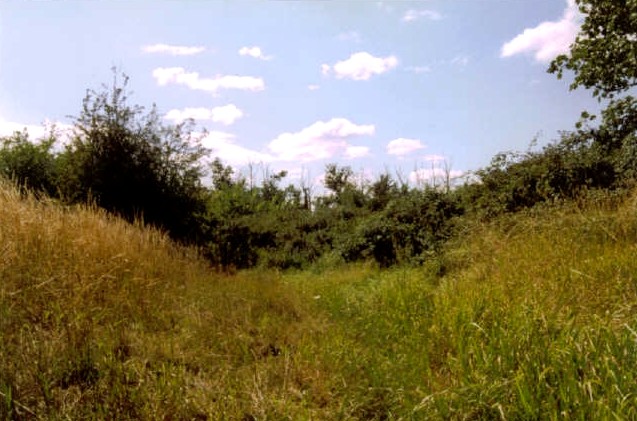This one may or may not be pre-Christian. I haven’t found much out about it yet, but I did visit it today, so at least I know a little about it.
Whilst reading books and looking at maps I came across the word ‘Enclosure’ on the 1:50,000 map, but no indication of where it actually was. The 1:25,000 map has no such word, but does have two possible sites.
The site that looked promising was a big banana shaped earthwork type thing centred on TQ052747. In reality, this is a huge modern concrete thing inside the perimeter fence of Heathrow Airport (presumably it’s some sort of sound shield or safety device).
The other one proved to be far more interesting, centred on TQ056746. After thinking at first that it might be on private land, I’m now pretty sure it is not. Part of the land off Oaks Road (near ‘The Rising Sun’) does have wire all around it and lots of signs saying ‘British Airports – Private property – No Trespassing’, but the bit that the enclosure lies on is presumably open land, as there are seats dotted around, a few scabby picnic tables, and two official steel entrances, one on the north east side near the Southern Perimeter Road at about TQ058746, and one on the south side at the corner of Russell Drive and Oaks Rd at about TQ057744. But there are no signs to say anything about the land.
The enclosure is basically a decent sized ditch, pretty much overgrown with brambles and trees, but relatively impressive considering is few metres from Heathrow! Varies in size but mainly about 3 metres across and a metre deep.
I can’t find any info about it in “The Archaeology of Hounslow” by Gillian Clegg (1991 – ISBN 0951831901), or “Prehistoric London” by Nick Merriman (1990 – ISBN 0112904475), which worries me. Anyone else know about it?



